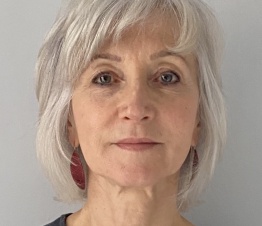What is cognitive analytical therapy (CAT)?
Cognitive analytic therapy (CAT) is a collaborative method which looks at the way a person thinks, feels and acts, where these patterns come from, and how they might be being upheld in an individual's life. As a form of therapy, it was developed in the UK by Dr Anthony Ryle in the context of providing effective and affordable time-limited therapy within the NHS. As with cognitive behavioural therapy (CBT), this therapy is short-term (usually 16 weeks, but ranges between 4 - 24), structured and directive.
Clients take an active role in their own process of healing, and learn to make associations and analyse their own responses through ‘homework’, such as diary keeping, progress charts, etc. The therapist works in collaboration with the client, focusing on changing negative thought patterns and behaviour, and teaching alternative strategies for coping.
One of the defining features of cognitive analytic therapy is the use of reciprocal roles (RRs). The emphasis is put on relationships between people, rather than problems occurring solely within the individual. RRs may begin in early life (for example, how a child interacts with his/her parents), and may be repeated in adult life.
It is important that there is an empathetic relationship between the client and therapist, to help the client make sense of their situation and find ways of changing (in CAT these are called "exits"). The relationship between the therapist and the client in CAT is one of the ways that this therapy is distinguished from CBT (cognitive behavioural therapy). Though both time-limited therapies that work with patterns of thinking, behaving and feeling, in CAT the relationship between the client and therapist is held up as a mirror to relationships outside of the therapy room.
Who benefits from cognitive analytical therapy?
CAT is less well-known than CBT, but appeals to many of the same people. Those with anxiety, depression, disordered eating, phobias and relationship difficulties may find that structured analysis of their responses to various situations will help in realising where they have problems, while the strategies for coping are useful and achievable.
Claire Walsh, welldoing.org therapist:
"The CAT framework encourages you to take a step back and observe your patterns of interaction both with yourself and with others in order to challenge your intrusive and often incorrect thoughts.
CAT is an integrative approach, which draws on cognitive, psychoanalytic and social learning theories. It differs from CBT in that it focuses on the importance of relationships in developing and maintaining anxiety. This includes the relationship you have with yourself as well as the relationships you have with others, including your therapist. By discussing your early childhood experiences and life story your CAT therapist will work alongside you to map out some of the patterns you have developed to deal with stressful situations.
For example, if you were brought up in an environment where adults were unpredictable in their responses to you as a child you may have developed coping mechanisms such as ‘pleasing others’ or ‘taking responsibility’ in order to reduce the uncertainty and gain control over the situation. As a child these ways of dealing with anxiety would be understandable but as an adult they may no longer serve a purpose and maintain the anxiety rather than helping to diminish it. Going through life always trying to please others can be stressful and anxiety provoking and it may leave you feeling put upon or uncared for if others don’t reciprocate."
Relevant associations
This information has been vetted by a professional member of the welldoing.org directory
Last updated on 14 January 2019




















